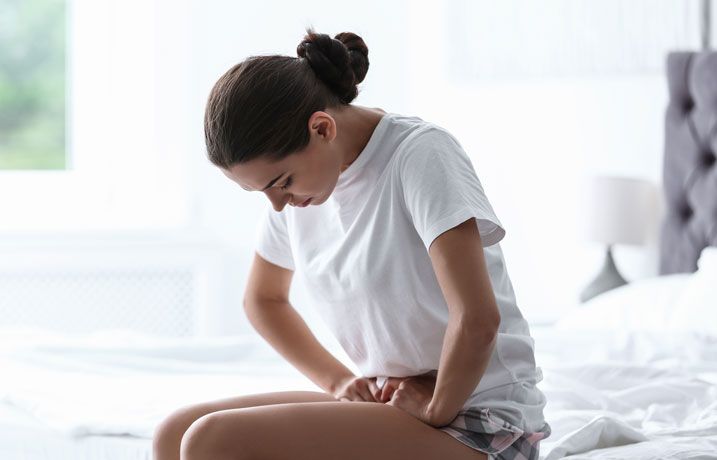
Almost every woman has encountered a vaginal infection one or more times in their lives, and some also struggle with chronic inflammation of the genital tract caused by the infection. Inflammation can be caused by a variety of microorganisms as well as chemical and physical stimuli.
For proper and effective treatment, diagnosis is paramount, and only a gynecologist can determine what type of inflammation or infection is involved. If you want to find out more about this topic, check Yourdoctors.online and get more info.
Did they know that according to the World Health Organization (WHO), there are no symptoms in a significant number of vaginal inflammations? This is a very interesting fact, and many women have a vaginal infection or some other gynecological disease, but they did not even know. It is very important to go on a regular check-up with your gynecologist.

If you notice an unpleasant odor discharge, you feel a burning sensation when urinating, itching, and discomfort during intercourse, you may have vaginal inflammation. There are different types of vaginal infections, as well as sexually transmitted infections and other conditions that can mimic the symptoms of a vaginal infection.
If we do not have any symptoms of inflammation, then we are not even aware that it is happening and do nothing to resolve the problem. In this way, we expose ourselves to all the negative consequences of the disease and pave the way for new inflammations. This is the worst thing we can do for ourselves, as frequent vaginal inflammation can lead to the transmission of sexually transmitted diseases, including HIV, herpes, and HPV, which most commonly cause cervical cancer!
Therefore, you must visit your doctor for a diagnosis every time you feel the symptoms of a vaginal infection. Some women who suffer from one of the two most common forms of vaginal infection, vaginal fungal infection, and bacterial vaginosis, prefer to treat their infections without medication. In the article down below, we wrote how to treat gynecological disease naturally.
What contributes to the development of fungi?

- You are taking antibiotics that disrupt the balance between good and bad bacteria and the pH of the mucous membranes.
- A rich diet in carbohydrates, which the fungi feed on.
- Consumption of large amounts of alcohol, which are converted into sugar during the digestion process and feed the fungus.
- Stressful life and insufficient sleep.
- Wearing a wet swimsuit as fungi multiply faster in moist environments.
- Irregular eating and consuming too much acidic food.
- You are wearing tight clothing (pants and thong shorts, where the body is not breathing).
- Daily use of daily cartridges and tampons.
- Pregnancy and diabetes.
- Panties at temperatures below 60 degrees.
Fortunately, there are also natural remedies to address this type of problem. Here are the best ones:

- One yogurt (2dcl) per day, containing probiotics, will help you balance your vaginal flora. Yogurt and various probiotics are allies of good bacteria and, therefore, enemies of fungi. For fungi, drink about half a liter of yogurt a day. It can reduce itching and redness if applied directly to the affected mucous membranes. Leave on for ten minutes and then rinse with water.
- Eat one scoop of garlic each day by grinding it and adding it to soup, salad, sauce, or other foods. Garlic has long been known for its antifungal properties, and you can use it to treat and prevent vaginal infection. Increased garlic intake acts as a natural remedy for fungi and bacteria due to sulfur glycosides, vitamins, and oils. Garlic can be placed directly into the vagina by peeling the lobe and wrapping it in clean gauze like a tampon and then inserting it into the vagina. Keep part of the gauze out of the vagina so you can pull it out more easily. If there is a feeling of intense burning, remove the garlic. Therapy should be continued until symptoms have stopped.
- Reduce the amount of animal fat in your diet, avoid peanuts, sweet foods, and mushrooms, and increase the amount of essential fatty acids found in some fish and nuts to reduce inflammation and tissue swelling.
- Take at least 500 mg of Vitamin C and Vitamin E, which will help reduce inflammation associated with the infection and boost your immune system.
- Rosemary tea is effective against itching and burning. You can use it as an intimate care product (to wash intimate parts of the body) or just stuff it into the vaginal opening. You can drink it too – pour 1 teaspoon of dried rosemary with 1 cup of boiling water, leave covered for 10 minutes, then proceed. Drink 1 to 4 cups a day if you have a fungal infection.

- Apricot and marigold have proven antibacterial activity. Knock out a couple of calendula leaves (make sure the plant is clean, untreated with chemicals). Knead the leaves and apply the surface. (Avoid in pregnancy).
- Tea tree essential oil stops the growth of candida. Put a few drops of tea tree oil on the tampon and put it in the vagina. Allow two to 3 hours to work. Repeat twice daily.
- Oregano oil works similarly. You can apply it superficially but diluted in olive oil, or orally as capsules 2 times a day. You can get rid of fungal infection in a couple of weeks with this treatment.
- Baking soda will promote the alkaline state of the organism, in which fungi are more difficult to reproduce. You can prepare a mixture of two liters of boiled water with two tablespoons of baking soda and rinse your vagina daily for one month, except during your period.
- Pure natural calendula oil is very successful in the long-term treatment of fungi. Put a small amount of oil on a plate and soak a thin swab a little. The pad itself must not be soaked. Change the tampon and repeat until symptoms disappear.
We hope we help you with our natural tips and tricks on how to treat some of the gynecological diseases.
















